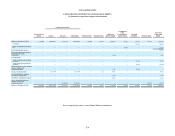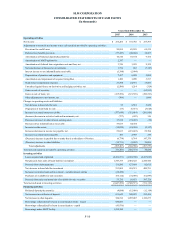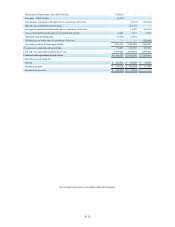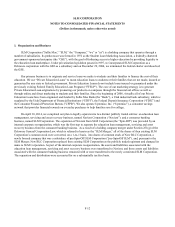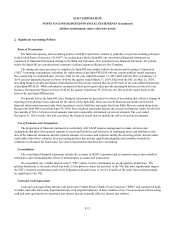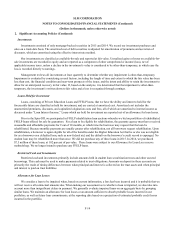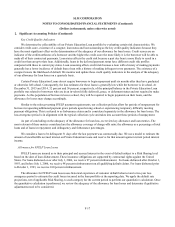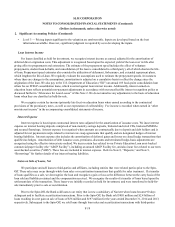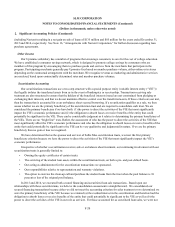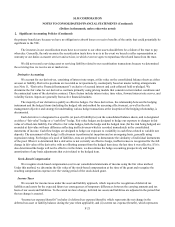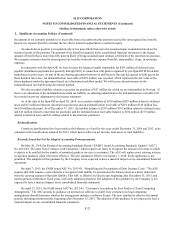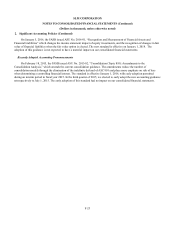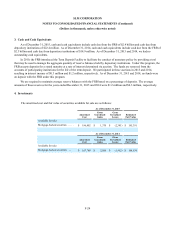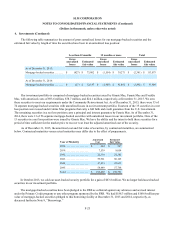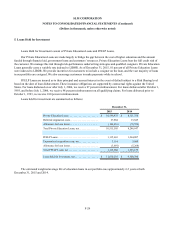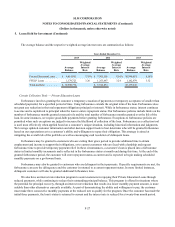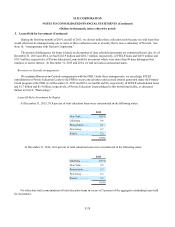Sallie Mae 2015 Annual Report Download - page 108
Download and view the complete annual report
Please find page 108 of the 2015 Sallie Mae annual report below. You can navigate through the pages in the report by either clicking on the pages listed below, or by using the keyword search tool below to find specific information within the annual report.SLM CORPORATION
NOTES TO CONSOLIDATED FINANCIAL STATEMENTS (Continued)
(Dollars in thousands, unless otherwise noted)
2. Significant Accounting Policies (Continued)
F-18
Deposits
Our deposit accounts are principally certificates of deposit (“CD”), money market deposit accounts (“MMDA”) and high
yield savings (“HYS”) accounts. CDs are accounts that have a stipulated maturity and interest rate. Early withdrawal of
brokered CDs is prohibited (except in the case of death or legal incapacity). Retail CDs may be withdrawn early, but a penalty
is assessed. MMDA and HYS accounts are both interest and non-interest bearing accounts that have no maturity or expiration
date. The depositor is not required by the deposit contract, but may at any time be required by the Company, to give written
notice of any intended withdrawal not less than seven days before the withdrawal is made.
Upromise related liabilities
Upromise related liabilities represent amounts owed to Upromise rewards members for rebates they have earned from
qualifying purchases from Upromise’s participating merchants. These amounts are held in trust for the benefit of the members
until distributed in accordance with the Upromise member’s request and/or the terms of the Upromise service agreement.
Upromise, which acts as the trustee for the trust, has deposited a majority of the cash with the Bank pursuant to a money market
deposit account agreement between the Bank and Upromise as trustee of the trust.
Fair Value Measurement
We use estimates of fair value in applying various accounting standards for our financial statements. Fair value
measurements are used in one of four ways:
• In the consolidated balance sheet with changes in fair value recorded in the consolidated statement of income;
• In the consolidated balance sheet with changes in fair value recorded in the accumulated other comprehensive income
section of the consolidated statement of changes in equity;
• In the consolidated balance sheet for instruments carried at lower of cost or fair value with impairment charges recorded
in the consolidated statement of income; and
• In the notes to the consolidated financial statements.
Fair value is defined as the price to sell an asset or transfer a liability in an orderly transaction between willing and able
market participants. In general, our policy in estimating fair value is to first look at observable market prices for identical assets
and liabilities in active markets, where available. When these are not available, other inputs are used to model fair value such as
prices of similar instruments, yield curves, volatilities, prepayment speeds, default rates and credit spreads (including for our
liabilities), relying first on observable data from active markets. Depending on current market conditions, additional
adjustments to fair value may be based on factors such as liquidity, credit, and bid/offer spreads. Transaction costs are not
included in the determination of fair value. When possible, we seek to validate the model’s output to market transactions.
Depending on the availability of observable inputs and prices, different valuation models could produce materially different fair
value estimates. The values presented may not represent future fair values and may not be realizable.
We categorize our fair value estimates based on a hierarchical framework associated with three levels of price
transparency utilized in measuring financial instruments at fair value. Classification is based on the lowest level of input that is
significant to the fair value of the instrument. The three levels are as follows:
• Level 1 — Quoted prices (unadjusted) in active markets for identical assets or liabilities that we have the ability to
access at the measurement date. The types of financial instruments included in level 1 are highly liquid instruments with
quoted prices.
• Level 2 — Inputs from active markets, other than quoted prices for identical instruments, are used to determine fair
value. Significant inputs are directly observable from active markets for substantially the full term of the asset or
liability being valued.



